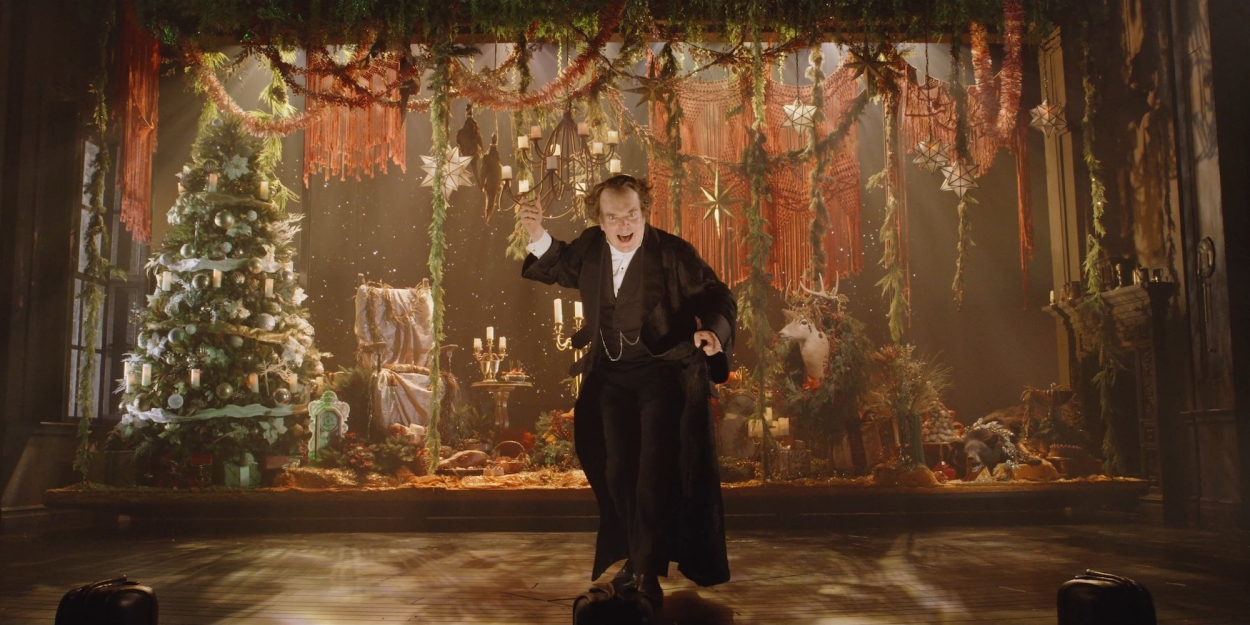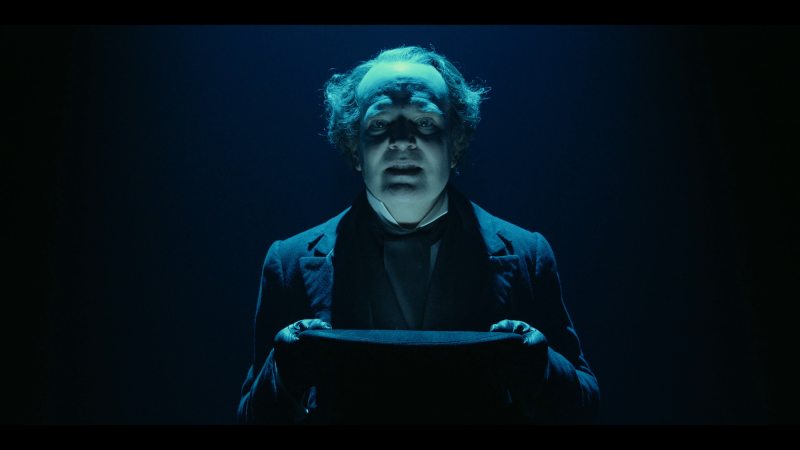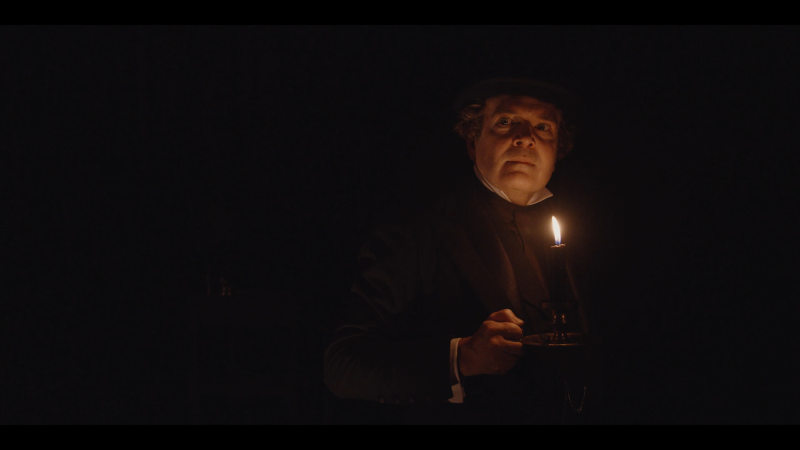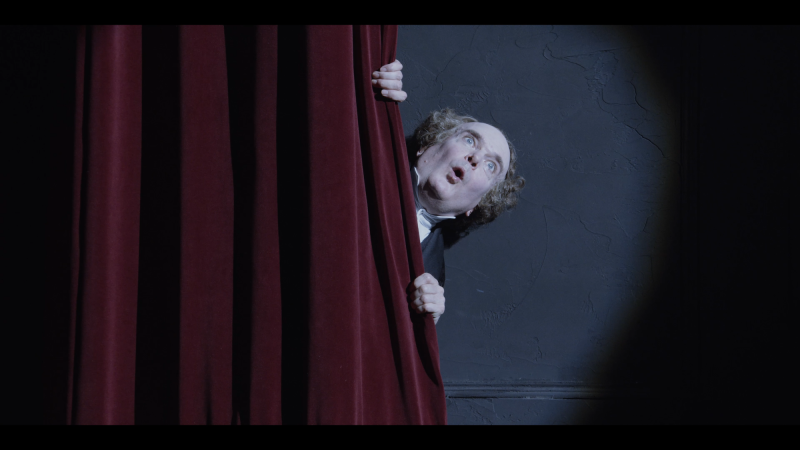How Jefferson Mays and the Design Team of A CHRISTMAS CAROL Are Making Holiday Magic
A Christmas Carol is running through January 1 at the Nederlander Theatre.

"What Jefferson is doing is a magic trick. We needed the design to do justice to that performance."
That is how scenic and costume designer Dane Laffrey described the design team's approach to Broadway's one-man A CHRISTMAS CAROL starring Jefferson Mays. And they definitely managed magic. It is a rare show that leads even Broadway regulars to leave the theater going: "How did they do that?" BEAUTY AND THE BEAST, HARRY POTTER AND THE CURSED CHILD and some others have managed, but not many. This show did.
It all started over five years ago. Jefferson Mays had been speaking to Geffen Playhouse Artistic Director Matt Shakman about the idea of doing a one-man CHRISTMAS CAROL. Shakman approached director Michael Arden and Arden approached his high school friend and constant collaborator, Laffrey. Arden and Laffrey conceived of the production currently at the Nederlander Theater through January 1.
According to Laffrey, they pretty quickly made the decision that the show wouldn't be Mays sitting on a stool telling the story. That might be akin to what Dickens did when he himself toured with his own one-man performance version of the story, but that was not what they wanted for Mays. They needed to create a world which would enable Mays to fully inhabit the characters. A world which would enable the audience to buy into the haunting nature of the vehicle. With that vision in mind, projection designer Lucy Mackinnon and her husband, lighting designer Ben Stanton, who both worked with Arden and Laffrey on SPRING AWAKENING, were soon brought on board. The production (which also features sound design by Joshua D. Reid) premiered at The Geffen Playhouse in 2018 and was remounted and recorded during the pandemic at the new Tony Awards home, the United Palace. At each mounting, there have been tweaks, but the original concept has remained consistent.

The show is so effect-heavy that one loses sense of what is real and what is not. Mays blows out a candle and the smoke is so visible, even from the back of the house, that the mind wonders if it is a projection. Maybe there is no candle there at all, it's all a parlor trick.
"Those are real candles and smoke," Laffrey said. "But part of the fun of the piece is how unsettling it can be and then you start to ask yourself questions. There is an unreliability about the world that makes you question everything that is going on around you and the reality of it."
But just how is it all possible? A lot of the material world we see is the work of Mackinnon. (Arden, Laffrey and others naturally approve the work before the audience sees it.) The moniker "projection designer" is almost a misnomer because the technology-enhanced visuals in the show encompass more than what we think of as projections. A CHRISTMAS CAROL utilizes extremely high-resolution LED panels embedded in the set pieces and upstage, a high-end programming system to control the show and a more typical front projection system that hits the downstage proscenium. There are also a lot of different content types for the show, which all fall under Mackinnon's general purview.

"The flying sequence, that's all just giant masses of particles and emitters and that's a 3D piece of content," she stated plainly, using the word "particles" as matter-of-factly as a physics professor would. "Whereas other things were captured on film and then manipulated, and other things are drawn."
According to Mackinnon, the physical set created by Laffrey is almost entirely black, to enable the pieces "to move invisibly when there isn't light shining directly on them." What you see on those pieces at any given moment is mostly Mackinnon's work, though of course all highlighted (or purposely not) by her husband's lighting. It took about six months to develop it all initially.
"I painted all of the wallpapers and the sort of grungy plaster textures," she said. "I created all of the flying sequences with animations. We all work together to discuss and conceive of when the technology is needed, but then my part is to develop the product that will allow the set to create all of these swift, magical transformations."
There are so many of them. As Mays transforms from character to character the scenes shift in space and in time seamlessly. The world is purposely eerie and therefore removed from reality in most ways, but yet captivatingly real in others. When Mays looks upon Fezziwig's Christmas party, the dancers appear almost as if in a faded childhood memory, slightly out-of-focus yet at the same time vivid enough to stir emotions. A knowledgeable audience member knows there are no dancers there, but I heard a child in the audience wonder why they had not taken a bow.
That particular scene is actually not completely the creation of technology. Actors were filmed for it at the Geffen. Laffrey designed the costumes they wear. Mays's narration was used to cue the action during the single-camera shoot.
"In addition to filming it, there are many, many layers of effects that are on top of it," Mackinnon said. "What I did with the design of the content was just to make it feel as little like a video piece as possible through color effects, blurs, slow motion, timing maps, and then a small amount of strategic queuing."

The LED panels sit behind the carved-out windows, so the light has the appearance of emitting through the windows. And because of that panel placement, no matter where one sits in the theater, it's impossible to see the edges of the screen. From every audience angle, the action appears to be happening inside Fezziwig's Warehouse. (There are a couple of other recorded video effects in the show that there is little point in giving away.)
None of this would have been nearly as effective years ago. The world of A CHRISTMAS CAROL is dark and a projection generally cannot achieve true black. It's either the absence of light or the shine of a black light, but it's not true black. Thankfully, LED technology has improved, and it is through the use of those LED panels that this A CHRISTMAS CAROL world is primarily conveyed.
"They are so black, and produce such a high contrast, and are so sharp, that we can fool the eye with depth," Laffrey said. A 2D image looks 3D. A door seemingly distorts. Mays looks like he is engaging with a reality that does not exist, much like Scrooge himself.
Throughout the show, equipment tracks all the surfaces so that the team can keep content steady on them and move the projection with the motion of the physical set. It's an equipment heavy production, but the equipment is virtually silent when running, another improvement in the last decade.
The production is clearly stuffed with effects and tricks--beyond the candelabra, some stage props, the curtain and May's central performance, very little is in fact authentic. But somehow, there are moments when it does all seem real.
As Laffrey put it: "The integration of the entire video landscape is inextricably tied in this soupy world, so you sometimes can't perceive where one ends and the other begins."
Videos


